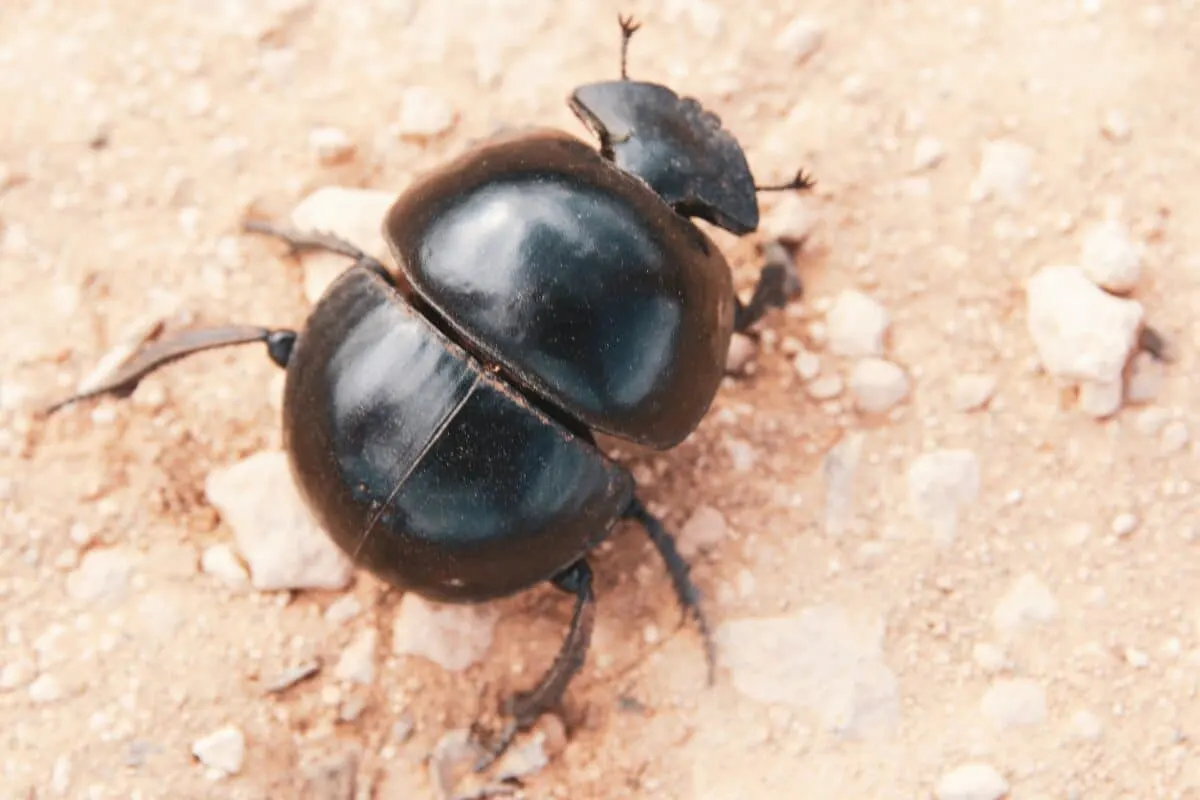Welcome to the world of the heaviest dung beetle!
When it comes to animals, size certainly matters. While the big cats may be one of the first groups that come to mind when it comes to beasts of sizable proportions, another species can easily rival them – dung beetles. As their name implies, these creatures roll around in droppings and thrive on their nutritional components; however, some among this family are truly extraordinary!
Meet the world’s heaviest recorded dung beetle – no bigger than your finger and holding a record-breaking title since 2019 for the largest insect discovered hitherto. From how they use poop as an indispensable resource for survival to their extreme strength needed to carry heftier loads across long distances – get ready as we explore this fascinating creature like never before!
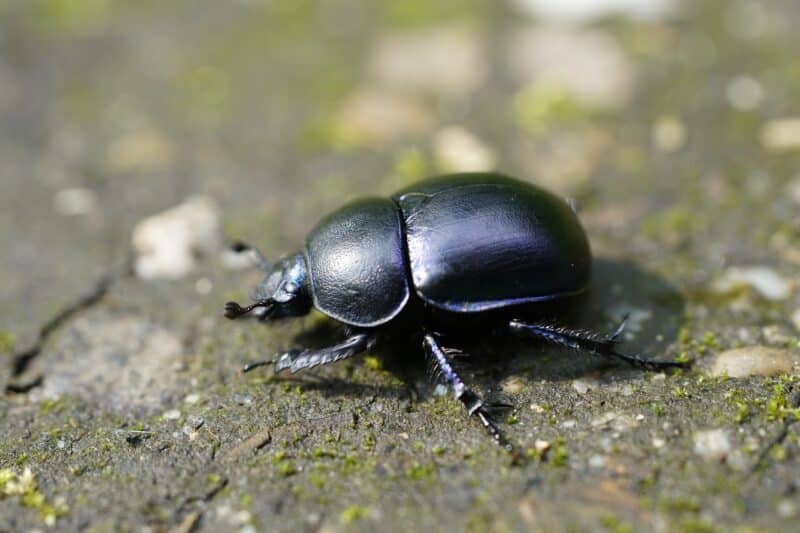
Key Points
| The world’s heaviest recorded dung beetle is the Onthophagus taurus, weighing up to 1.2 grams and no bigger than an index finger. It holds the record for the largest insect discovered. |
| Dung beetles, like the Onthophagus taurus, use dung as a nutritional resource for survival, including food, shelter, and breeding. They release pheromones to attract mates and lay eggs in dung balls. |
| The Onthophagus taurus exhibits extreme strength and endurance, capable of rolling dung balls up to fifty times their weight over long distances, using powerful legs, thorax, and mandibles. |
| The Onthophagus taurus has achieved record-breaking status as the world’s heaviest recorded dung beetle, attracting attention from scientists and insect enthusiasts. |
| Dung beetles have unique anatomy, including a body divided into a head, thorax, and abdomen, the strength that allows them to move objects much heavier than their size, compound eyes for a wide field of vision, and a sense of smell to locate dung sources. They navigate using celestial cues and reproduce by laying eggs in dung balls. |
Want to jump ahead? Click below
Introducing The Heaviest Dung Beetle Ever Recorded
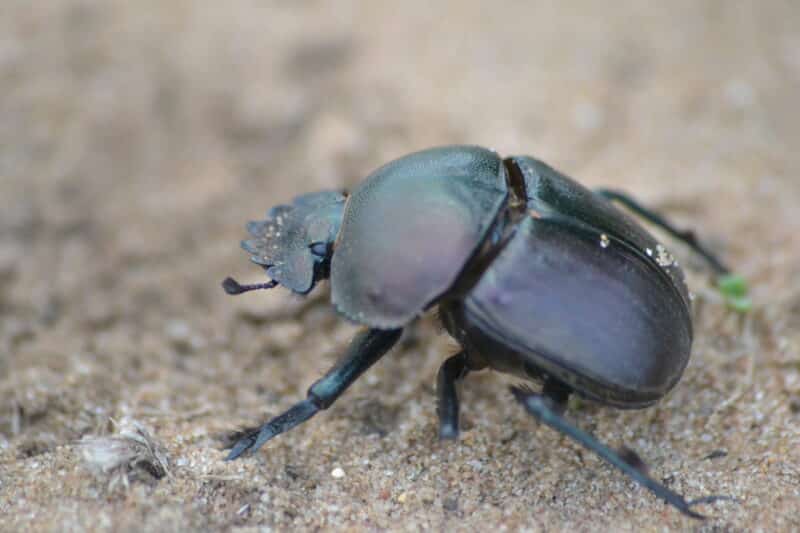
The world of insects is full of surprises, and few species can match the incredible attributes and achievements of the humble dung beetle.
Of all the dung beetles out there, none can compare to the heavyweights of the species. Meet the world’s heaviest recorded dung beetle, a fascinating creature that has earned a place in the record books and captured the imaginations of insect enthusiasts worldwide.
Let’s look at this incredible insect and explore the facts and features that make it a remarkable creature.
Size Does Matter – Meet The World’s Heaviest Dung Beetle
Regarding dung beetles, size matters, and the world’s heaviest recorded dung beetle is an impressive specimen. Known as the Onthophagus taurus, this extraordinary insect is no bigger than your index finger but can weigh up to 1.2 grams, making it the heaviest flying insect ever recorded.
Found in the temperate regions of Europe, Asia, and Africa, the Onthophagus taurus is a heavyweight and a master at rolling balls of dung several times its weight and navigating them over long distances for storage.
Poo As A Nutritional Resource – The Secret To The Dung Beetle’s Success
Dung beetles, like the Onthophagus taurus, are known for their unique diet of dung. These fascinating creatures thrive on the nutritional components of animal feces, which they use for food, shelter, and breeding. When rolling balls of dung, the Onthophagus taurus releases pheromones that attract females looking for a suitable breeding partner. The ball of dung provides the perfect environment for the female to lay her eggs, making the Onthophagus taurus a crucial contributor to the ecological balance of its habitat.
Extreme Strength And Endurance – The Superpowers Of The Onthophagus Taurus
Rolling balls of dung, which can be up to fifty times the beetle’s weight, require extreme strength and endurance, and the Onthophagus Taurus has both in abundance.
Thanks to its powerful legs, thorax, and strong mandibles, this impressive insect can maneuver dung balls over long distances and up steep inclines, often against stiff competition from other dung beetle species. Indeed, the Onthophagus Taurus is renowned for its brute strength and ability to transport these smelly balls of poop over distances of up to 100 meters.
Record-Breaking Achievements – Recognizing The Heaviest Dung Beetle On Record
The great Onthophagus taurus is no stranger to record-breaking achievements, and its reputation as the world’s heaviest recorded dung beetle is a testament to its strength and endurance. This fascinating creature, Named after the bull-like hump on its thorax, has captured the attention of scientists and insect enthusiasts around the globe, earning its place in the record books and proving that size does matter in the world of insects.
The Anatomy Of A Dung Beetle
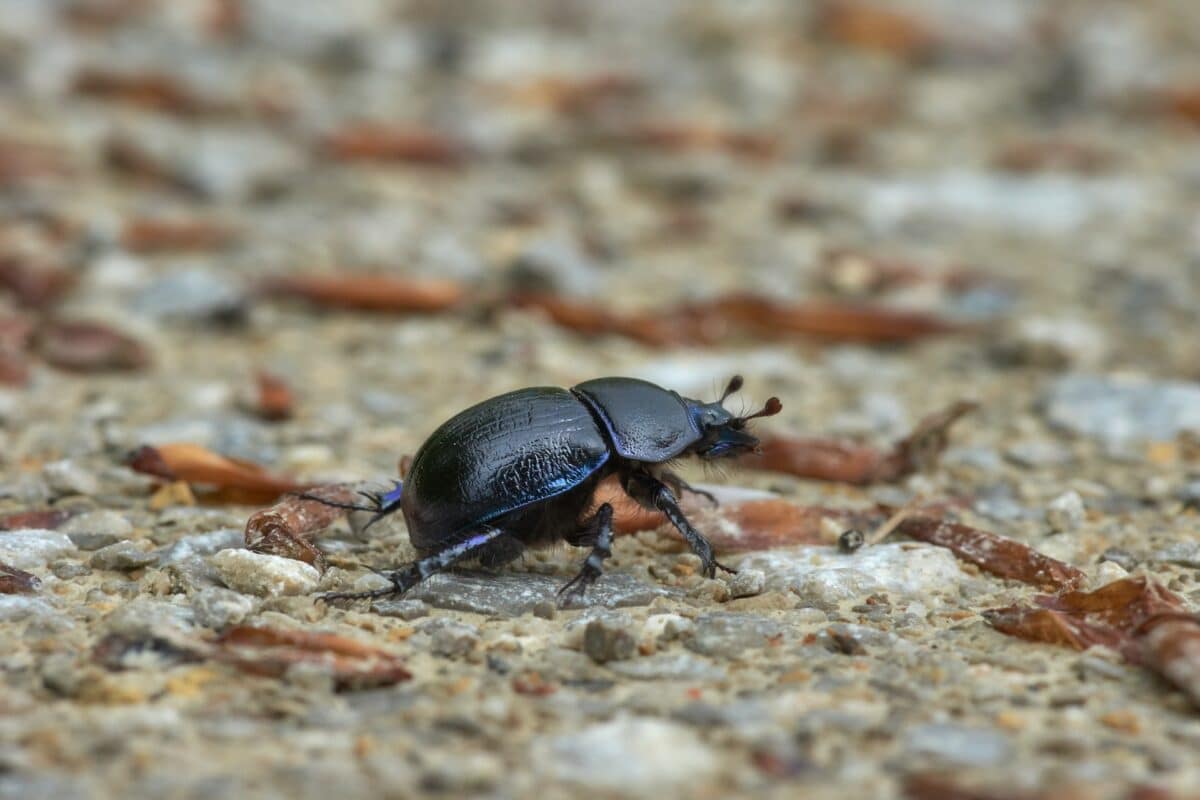
Dung beetles are fascinating creatures that inhabit most regions of the world. They are often associated with waste and dung but are much more than scavengers. Their unique physical features set them apart from other insects, making them one of the most peculiar species in the animal kingdom.
Let’s delve into the anatomy of a dung beetle and explore the unique features that make this species so special.
Body Shape And Anatomy
A dung beetle’s body is segmented into three distinct parts: the head, thorax, and abdomen. The head houses two antennae and a pair of powerful mandibles for digging and rolling dung balls. The thorax is the central body section where the dung beetle’s Six legs and two pairs of wings are connected. The wings are used for flight, often necessary for finding new dung sources. Finally, the abdomen is where the digestive system (i.e., the midgut, hindgut, and rectum) is located, along with the reproductive organs.
Strength
One of the most impressive features of the dung beetle is its strength. Despite their small size, dung beetles are capable of moving objects up to 50 times their weight. This strength comes from their mandibles, adapted to grasp and move various objects, including dung.
Vision
The eyes of the dung beetle are another fascinating characteristic. Dung beetles have compound eyes composed of multiple lenses that allow for a wide field of vision. They also have a specific type of photoreceptor that allows them to see polarized light, even with minimal light sources such as the stars.
Sense of Smell
Dung beetles can detect dung through their highly developed sense of smell. They can detect the odor of dung from great distances, which guides them toward a food source.
Dung beetles are also extraordinary navigators. They use celestial cues, such as the position of the sun and the Milky Way, to move in a straight line.
Using their sense of smell and vision, they can quickly locate a dung source and roll it away from competitors.
Reproduction
Dung beetles have a unique way of reproducing. Females lay their eggs inside a dung ball, where the larvae hatch and feed on the feces until adulthood. Males often compete for the right to mate, and females will select the male with the largest and most impressive dung ball.
Understanding Dung Beetles’ Habits And Habitations
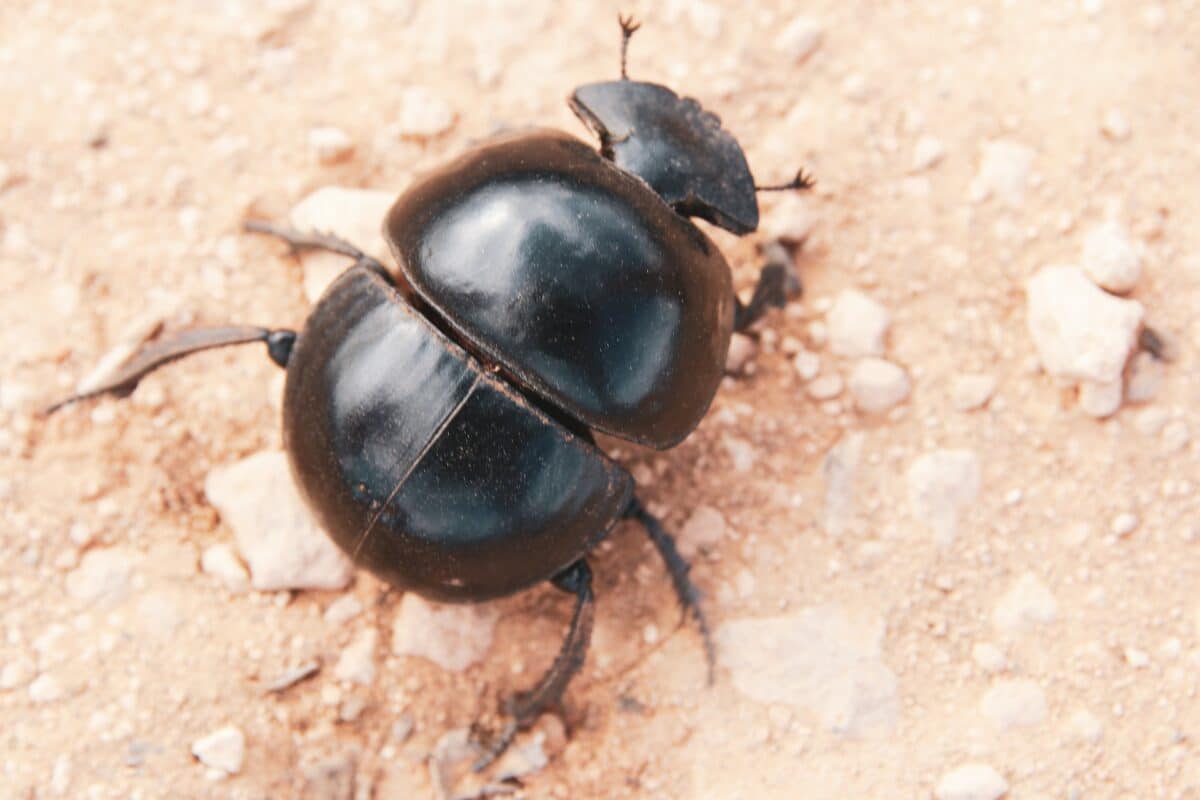
Dung beetles are truly fascinating creatures. They play an essential role in keeping our ecosystems balanced and healthy. These beetles have an interesting life cycle, from hatching from their eggs into a grub-like stage to transforming into adult beetles and finding a mate to reproduce.
Regarding their habitation, dung beetles live in various environments, including pastures, savannas, and forests. These habitats provide abundant animal manure for the dung beetles to feed on and use for their offspring. It is important to understand the habits and habitation of these creatures so that we can appreciate their role in the environment and protect their habitats.
Check out Rolling in it: Dung beetles are nature’s helpers.
The Important Role Of Dung Beetles In Ecosystems
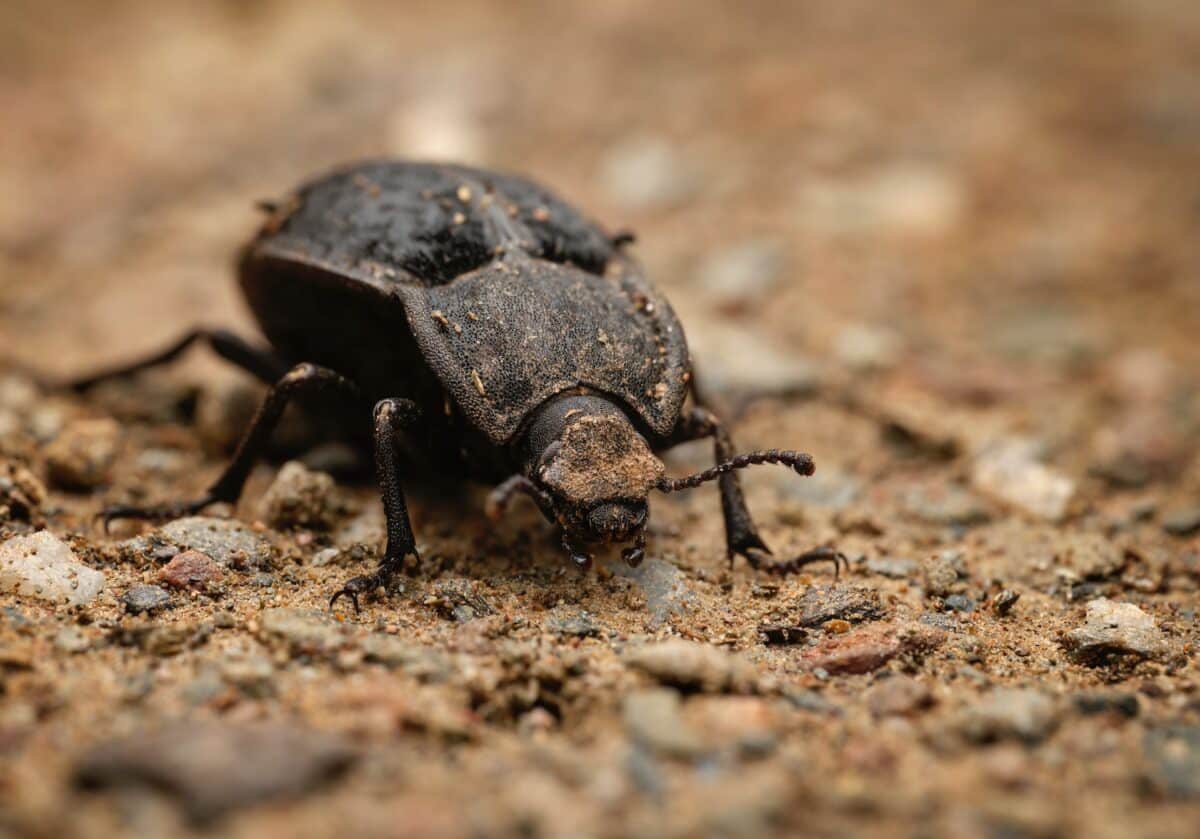
Dung beetles may be small, but they play a crucial role in the balance of nature. Often overlooked, these tiny creatures act as nature’s waste management system by cleaning up the byproducts of larger mammals. Without dung beetles, animal feces would accumulate and risk animal and human health.
Also, Dung beetles contribute to soil health as they tunnel through the soil, aerating it and increasing nutrient availability for plants. In addition, they also reduce greenhouse gas emissions by burying the feces instead of allowing them to decompose on the surface. These unsung heroes of the ecosystem are essential to maintaining balance in nature.
The Benefits Of Owning A Pet Dung Beetle
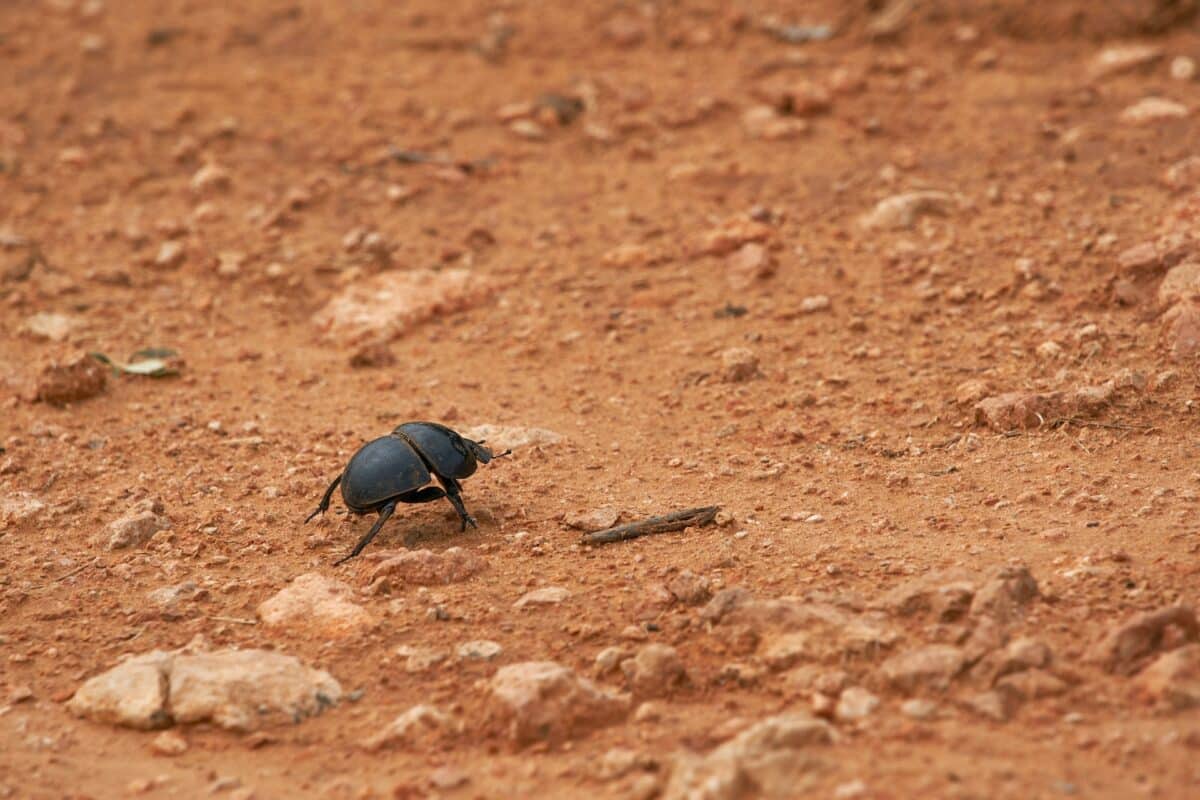
If you’re looking for a unique and low-maintenance pet, look no further than the dung beetle. Though often overlooked, these bugs can make fantastic companions for several reasons. For one, they’ll happily consume waste from other animals in your household, making them a valuable addition to any eco-conscious home. They’re also incredibly easy to care for – all you need is a substrate for them to burrow into and some fresh waste to keep them fed and happy.
Beyond their utility, dung beetles make fascinating study subjects, as they’re known for their impressive navigational abilities and association with celestial bodies. So if you’re looking for a conversation starter and an efficient waste management solution, consider welcoming a pet dung beetle into your home.
How To Safely Care For A Dung Beetle At Home
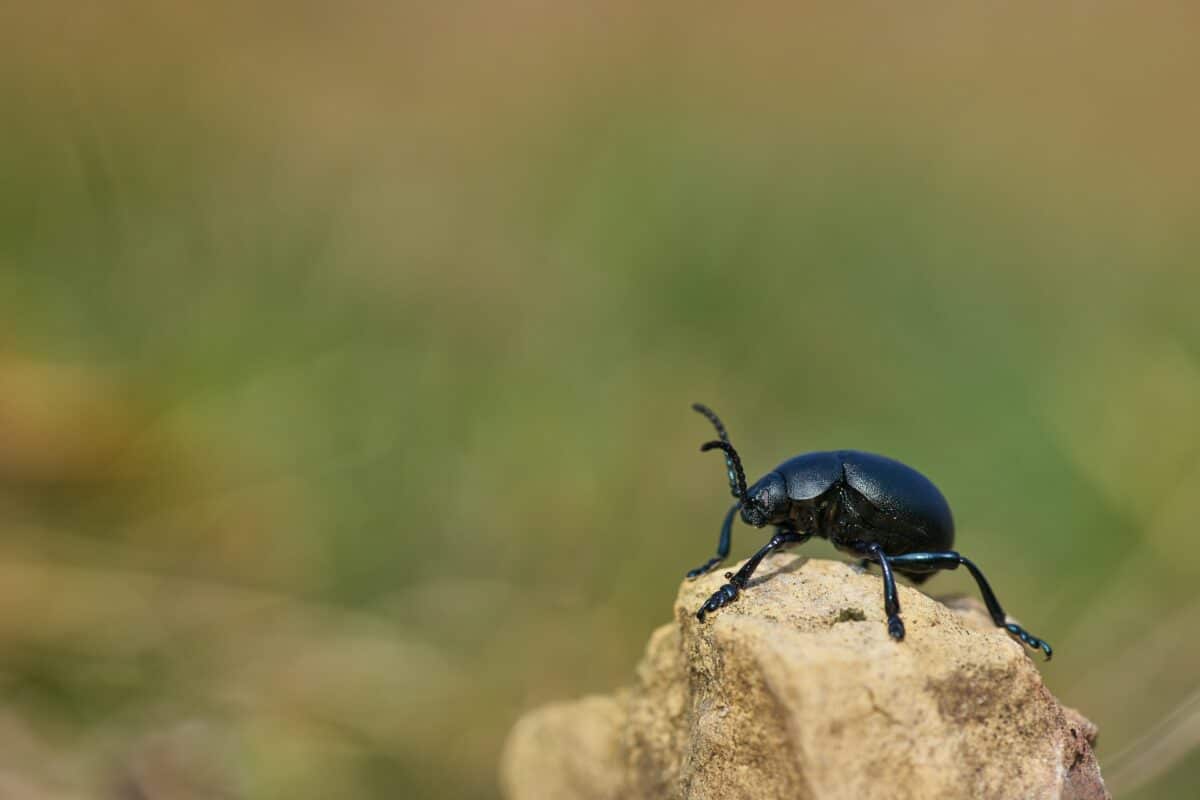
If you consider bringing one of these fascinating creatures into your home, learning about their proper care is essential. When it comes to feeding, you’ll want to provide your beetle with fresh dung regularly. It is their primary source of nutrition.
Additionally, it’s crucial to ensure that their habitat is adequate. It must have plenty of space for them to move around and burrow. A substrate of sand and soil will mimic their natural living conditions. You’ll want to keep their environment moist with a spray bottle. With these essential tips, you’ll help your pet dung beetle thrive and live a happy life in their new home.
Check out Dung Beetles Help Keep Ecosystems Healthy.
Wrapping Up with the Heaviest Dung Beetle
The read above shows what a remarkable creature the dung beetle is! Not only do these hardy insects use excrement as a vital resource, but they are also capable of withstanding intense physical exertion in their pursuit. The overall resilience and sheer power of the biggest dung beetles are comparable to those of large beasts like lions and tigers, yet with significantly less bulk!
There can be no doubt that we have much to learn from such industrious insects. From inspiring us to find creative solutions to our environmental problems to aiding us in developing strength through adversity, this species provides abundant knowledge.
Let us take this opportunity to illuminate the great potential of dung beetles while respecting their incredible abilities!
Next up:
- Watch Rare Encounter: The Largest King Cobra in Action in Thailand - April 26, 2024
- Selkirk Rex Cat - April 25, 2024
- Bald Eagle Family Expand Their Nest In California - April 24, 2024

